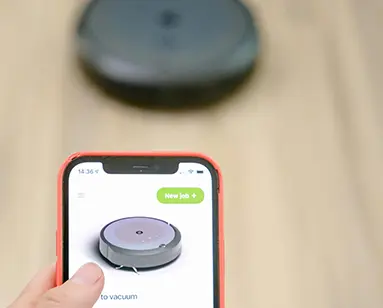The Rise of Smart Vacuums: How They Are Revolutionizing Home Cleaning
How Smart Vacuums Work
Smart vacuums operate using a combination of sensors, mapping technology, and artificial intelligence to navigate and clean floors effectively. Here’s a breakdown of how they function:
- Navigation and Mapping – Most smart vacuums use LiDAR (Light Detection and Ranging) or camera-based navigation to scan and map the home layout. This enables them to clean methodically rather than moving randomly.
- Obstacle Detection and Avoidance – Built-in sensors detect furniture, walls, and obstacles, allowing the vacuum to maneuver around them without getting stuck.
- Automated Cleaning Patterns – Unlike traditional vacuums that require manual operation, smart vacuums follow efficient cleaning routes and adapt based on the environment.
- Self-Charging Capabilities – Once the battery runs low, the vacuum automatically returns to its charging dock, ensuring it’s always ready for the next cleaning session.
- Smart Connectivity – Many smart vacuums connect to mobile apps or voice assistants like Alexa, Google Assistant, or Siri, allowing users to schedule cleanings, monitor progress, and control the device remotely.
Key Features of Smart Vacuums
1. App Control and Scheduling
Smart vacuums can be controlled via smartphone apps, enabling users to schedule cleaning sessions, set specific cleaning zones, and receive real-time notifications.
2. Voice Assistant Integration
Many models are compatible with smart home systems, allowing hands-free operation through voice commands such as “Alexa, start vacuuming.”
3. Multi-Surface Cleaning
Smart vacuums can automatically adjust to different floor types, such as carpets, hardwood, and tile, optimizing suction power for efficient cleaning.
4. Smart Mapping and No-Go Zones
Advanced models create detailed maps of the home and allow users to designate restricted areas where the vacuum shouldn’t enter, such as pet feeding stations or delicate furniture areas.

5. Self-Emptying Dustbins
Some high-end models come with self-emptying bases, reducing the need for frequent manual emptying and making maintenance even more convenient.
6. HEPA Filtration for Allergen Control
Smart vacuums with HEPA filters help trap dust, pollen, and pet dander, improving indoor air quality, especially for allergy sufferers.
Benefits of Using a Smart Vacuum
1. Saves Time and Effort
A smart vacuum automates the cleaning process, freeing up time for other tasks or relaxation.
2. Consistent and Efficient Cleaning
With scheduled cleanings and adaptive navigation, smart vacuums ensure that floors remain consistently clean without manual intervention.
3. Ideal for Pet Owners
Smart vacuums are great for households with pets, as they can efficiently pick up pet hair and dander from floors and carpets.
4. Improves Home Hygiene
Regular vacuuming helps maintain a cleaner home environment, reducing dust buildup and allergens.
5. Convenient for Large Homes
For larger homes, smart vacuums provide efficient cleaning without the need to manually push a heavy vacuum cleaner around.
Conclusion
Smart vacuums have become an essential part of modern households, offering a hassle-free solution to maintaining cleanliness. With intelligent navigation, app control, and powerful suction capabilities, these devices are revolutionizing the way we clean our homes. Whether you live in a small apartment or a large house, a smart vacuum can save you time and effort while keeping your floors spotless. Investing in a smart vacuum is a step toward a more convenient and efficient home cleaning experience.








